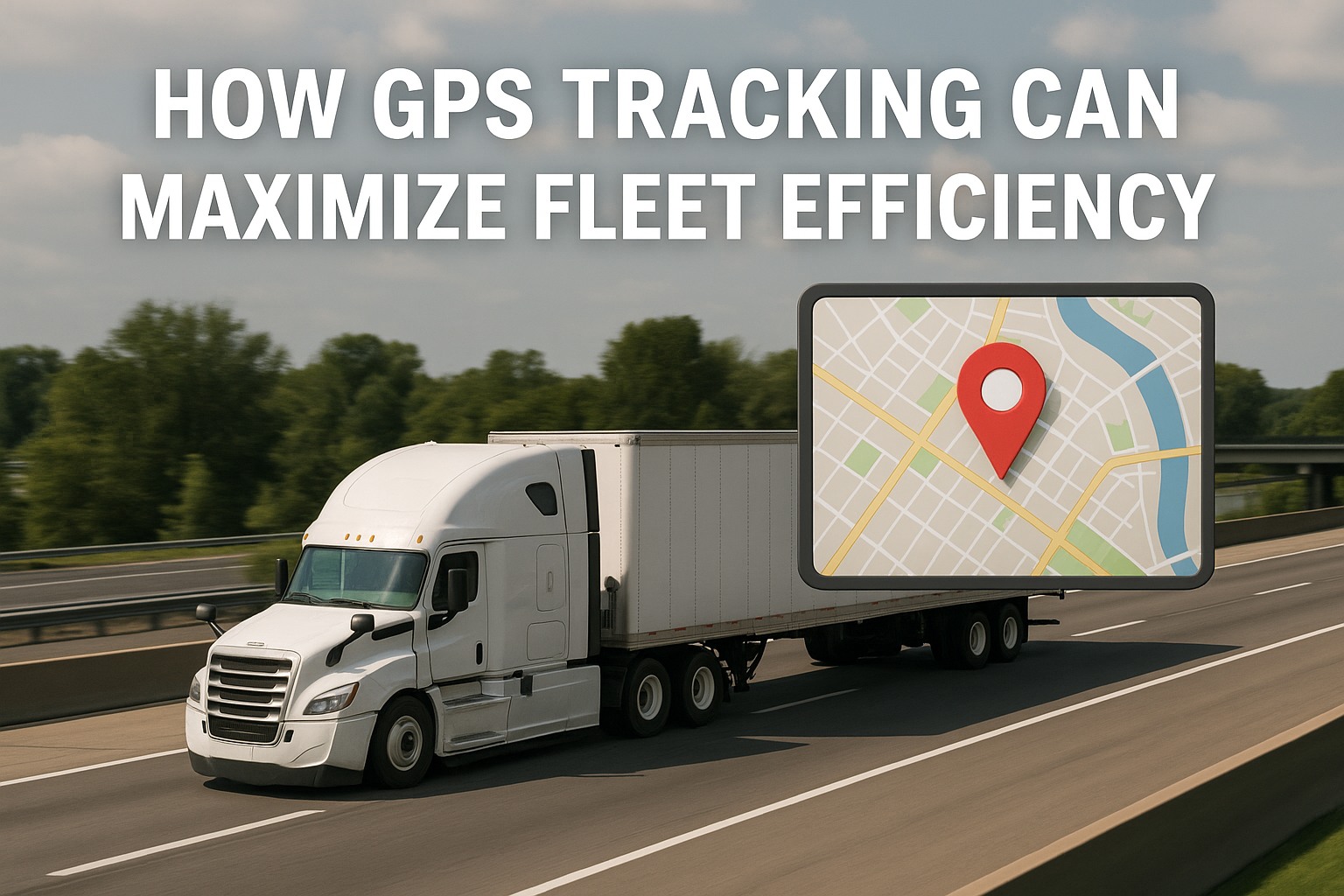The Real Impact of GPS Fleet Tracking
Advanced GPS tracking delivers measurable operational and financial benefits:
40%
Fuel cost reduction
$30K+
Annual savings per vehicle
25%
Productivity increase
35%
Fewer accidents
Essential GPS Tracking Features & Benefits
1. Real-Time Vehicle Tracking & Visibility
Core FeatureLive Tracking: Second-by-second location updates, breadcrumb trails, geofence alerts, traffic integration
Fleet Overview: Multi-vehicle dashboard, status indicators, ETA calculations, route progress monitoring
Mobile Access: Driver apps, dispatcher interfaces, customer portals, real-time notifications
2. Fuel Management & Cost Reduction
Profit DriverConsumption Monitoring: MPG tracking, idle time alerts, aggressive driving detection, optimal speed guidance
Route Optimization: AI-powered routing, multi-stop sequencing, traffic avoidance, shortest path algorithms
Fuel Card Integration: Purchase tracking, location verification, fraud prevention, price optimization
3. Predictive Maintenance & Vehicle Health
Asset ProtectionDiagnostic Integration: Engine fault codes, mileage tracking, service scheduling, wear predictions
Automated Alerts: Oil change reminders, tire rotation schedules, inspection deadlines, warranty tracking
Cost Analytics: Maintenance cost per mile, vehicle lifecycle tracking, replacement planning, fleet aging analysis
4. Driver Behavior & Safety Management
Risk ReductionBehavior Monitoring: Hard braking events, rapid acceleration, speeding alerts, cornering analysis
Safety Scoring: Driver scorecards, peer comparisons, improvement tracking, recognition programs
Coaching Tools: In-cab alerts, training recommendations, incident replay, performance trends
5. Compliance & Reporting Automation
Time SaverELD Integration: Automatic HOS logging, DVIR automation, roadside inspection readiness, violation prevention
IFTA Reporting: State mileage tracking, fuel purchase reconciliation, quarterly report generation, audit trails
Custom Reports: Utilization analysis, customer billing, payroll integration, executive dashboards
6. Customer Service Enhancement
Competitive EdgeDelivery Tracking: Customer portals, automated ETAs, proof of delivery capture, service verification
Communication: Automated arrival notifications, delay alerts, rerouting updates, feedback collection
Service Analytics: On-time performance, dwell time analysis, route efficiency, customer satisfaction metrics
Transform Your Fleet with Advanced GPS Tracking
Join thousands of fleets achieving 40% fuel savings and $30,000+ annual returns per vehicle. See results in 30 days.
GPS Tracking ROI Analysis
| Cost/Benefit Category | Without GPS Tracking | With GPS Tracking | Annual Savings |
|---|---|---|---|
| Fuel Costs | $30,000 | $18,000 | $12,000 |
| Maintenance/Repairs | $8,000 | $6,000 | $2,000 |
| Insurance Premiums | $5,000 | $4,000 | $1,000 |
| Labor/Overtime | $15,000 | $10,000 | $5,000 |
| Compliance Violations | $3,000 | $500 | $2,500 |
| Vehicle Replacement | $10,000 (amortized) | $7,000 (amortized) | $3,000 |
| Lost Productivity | $8,000 | $3,000 | $5,000 |
| Total Annual Savings Per Vehicle | $30,500 | ||
GPS Implementation Roadmap
Week 1-2: Planning
Foundation Phase
- Define tracking objectives
- Select GPS provider
- Choose hardware options
- Plan installation schedule
Week 3-4: Installation
Deployment Phase
- Install GPS devices
- Configure software
- Set up user accounts
- Test all features
Month 2: Training
Adoption Phase
- Driver orientation
- Manager training
- Report customization
- Policy development
Month 3+: Optimization
Refinement Phase
- Analyze data trends
- Adjust parameters
- Expand features
- Measure ROI
Common GPS Tracking Mistakes to Avoid
❌ Choosing Price Over Features
Risk: Missing critical functionality, poor support
Solution: Evaluate total value, ensure scalability, verify integration capabilities, check references
❌ Skipping Driver Buy-In
Risk: Resistance, tampering, poor adoption
Solution: Communicate benefits, address privacy concerns, involve drivers early, share positive results
❌ Information Overload
Risk: Analysis paralysis, missed insights
Solution: Start with key metrics, build gradually, automate reports, focus on actionable data
❌ Ignoring Data Quality
Risk: Poor decisions based on bad data
Solution: Regular audits, device maintenance, driver training, data validation processes
❌ Set and Forget Mentality
Risk: Diminishing returns over time
Solution: Monthly reviews, continuous optimization, regular training, evolving strategies
❌ Poor Integration Planning
Risk: Data silos, manual processes remain
Solution: Map workflows first, ensure API access, plan phased integration, test thoroughly
GPS Tracking Success Factors
Operational Excellence
- Real-time dispatching
- Route optimization
- Asset utilization
- Service verification
Result: 25% efficiency gain
Cost Management
- Fuel monitoring
- Idle reduction
- Maintenance planning
- Insurance savings
Benefit: 40% cost reduction
Safety Culture
- Driver coaching
- Risk scoring
- Incident prevention
- Compliance tracking
Value: 35% fewer accidents
Business Growth
- Customer satisfaction
- Competitive advantage
- Data-driven decisions
- Scalable operations
Impact: 20% revenue growth
Ready to Maximize Your Fleet Efficiency?
Implement GPS tracking and achieve 40% fuel savings with $30,000+ annual returns per vehicle. Start seeing results in 30 days.
Frequently Asked Questions
Modern GPS fleet tracking systems achieve 3-10 meter accuracy in open areas, with updates every 10-60 seconds depending on configuration. Advanced systems combine GPS with cellular triangulation and Wi-Fi positioning for enhanced urban accuracy. Real-world performance: 95% location accuracy, 99.9% uptime with quality providers. Factors affecting accuracy include urban canyons, tunnel passages, and extreme weather. Most systems include dead reckoning to estimate position during signal loss. For fleet operations, this level of accuracy enables precise route tracking, accurate arrival times, and reliable geofencing.
Most fleets achieve positive ROI within 3-6 months through immediate fuel savings (10-40% reduction) and productivity gains (20-25% improvement). Month 1: 5-10% fuel savings from idle reduction. Month 2-3: 15-20% overall efficiency improvement. Month 6: Full ROI achieved. Year 1: 300-500% return on investment. Fastest ROI comes from fuel management and overtime reduction. Larger fleets often see ROI in 2-3 months due to scale. Key accelerators: driver adoption, management engagement, and systematic optimization of identified inefficiencies.
GPS tracking achieves 40% fuel reduction through multiple mechanisms: Idle time reduction (10-15% savings) by alerting when vehicles idle over 5 minutes. Route optimization (8-12% savings) using real-time traffic and AI routing. Speed management (5-8% savings) by maintaining optimal speeds. Unauthorized use prevention (3-5% savings) through after-hours alerts. Aggressive driving reduction (5-7% savings) via behavior monitoring. Combined with maintenance optimization preventing fuel-wasting mechanical issues. Example: Fleet spending $30,000 annually on fuel saves $12,000 through these combined improvements.
GPS hardware options include: Plug-and-play OBD devices ($50-150) for light-duty vehicles - install in minutes, basic tracking features. Hardwired units ($100-300) for permanent installation - tamper-proof, advanced features, power management. Asset trackers ($150-400) for trailers/equipment - long battery life, rugged design. Integrated telematics ($300-800) with engine diagnostics - comprehensive data, predictive maintenance. Dual-mode devices combining cellular/satellite for remote areas. Consider: installation complexity, feature requirements, vehicle types, and coverage areas. Most fleets use hardwired units for best reliability and features.
Address privacy concerns through transparency and clear policies: Communicate that tracking is for business hours only, focusing on safety and efficiency, not surveillance. Implement privacy features like personal time switches for authorized personal use. Create written policies outlining data use, retention, and access. Emphasize benefits: safer driving support, accurate pay, protection from false claims. Share success stories of GPS helping drivers. Involve drivers in policy development. Legal compliance: follow state laws on employee monitoring. Most resistance disappears when drivers experience benefits like fair dispatching and eliminated paperwork.








